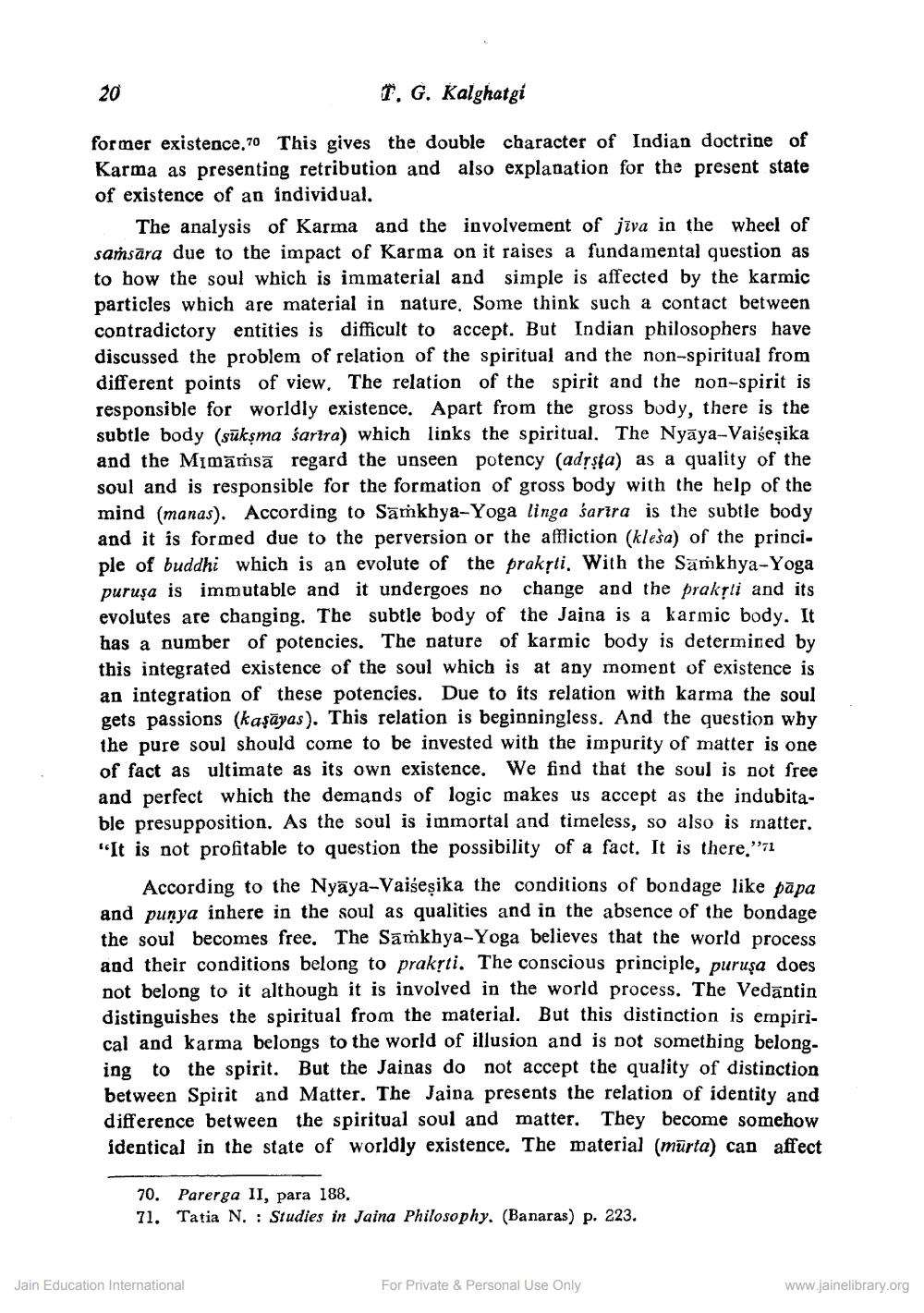________________
20
1. G. Kalghatgi
former existence.70 This gives the double character of Indian doctrine of Karma as presenting retribution and also explanation for the present state of existence of an individual.
The analysis of Karma and the involvement of jīva in the wheel of saṁsāra due to the impact of Karma on it raises a fundamental question as to how the soul which is immaterial and simple is affected by the karmic particles which are material in nature. Some think such a contact between contradictory entities is difficult to accept. But Indian philosophers have discussed the problem of relation of the spiritual and the non-spiritual from different points of view. The relation of the spirit and the non-spirit is responsible for worldly existence. Apart from the gross body, there is the subtle body (sūksma sarira) which links the spiritual. The Nyāya-Vaiseșika and the Mimāṁsā regard the unseen potency (adra) as a quality of the soul and is responsible for the formation of gross body with the help of the mind (manas). According to Samkhya-Yoga linga sarira is the subtle body and it is formed due to the perversion or the affliction (klesa) of the princi. ple of buddhi which is an evolute of the praksti. With the Samkhya-Yoga puruşa is immutable and it undergoes no change and the prakļli and its evolutes are changing. The subtle body of the Jaina is a karmic body. It has a number of potencies. The nature of karmic body is determined by this integrated existence of the soul which is at any moment of existence is an integration of these potencies. Due to its relation with karma the soul gets passions (kaşayas). This relation is beginningless. And the question why the pure soul should come to be invested with the impurity of matter is one of fact as ultimate as its own existence. We find that the soul is not free and perfect which the demands of logic makes us accept as the indubitable presupposition. As the soul is immortal and timeless, so also is matter. "It is not profitable to question the possibility of a fact. It is there."71
According to the Nyāya-Vaiseșika the conditions of bondage like pāpa and punya inhere in the soul as qualities and in the absence of the bondage the soul becomes free. The Samkhya-Yoga believes that the world process and their conditions belong to praksti. The conscious principle, puruşa does not belong to it although it is involved in the world process. The Vedāntin distinguishes the spiritual from the material. But this distinction is empirical and karma belongs to the world of illusion and is not something belonging to the spirit. But the Jainas do not accept the quality of distinction between Spirit and Matter. The Jaina presents the relation of identity and difference between the spiritual soul and matter. They become somehow identical in the state of worldly existence. The material (mūrta) can affect
70. Parerga II, para 188. 71. Tatia N. : Studies in Jaina Philosophy. (Banaras) p. 223.
Jain Education International
For Private & Personal Use Only
www.jainelibrary.org




